You can make a safe environment for your child regardless of the available space in your home. Guess it depends on your child’s age, and you have a few alternatives. Occasionally, you can place your kid in their crib. However, avoid utilizing their crib to be a playroom in general.
Children are natural adventurers, and your house is one big exploration zone for them. It is lovely since kids learn by exploring their environment and attempting new things. It becomes challenging to ensure the safety of your curious child as they discover new things and learn.
When left on their own to play, children will happily inspect what’s dropped beneath the couch and most likely munch it, grab for objects that could collapse over, and jump around your home unconscious of any possible risks. That is why a safe play space for children is helpful.
Directly monitoring your child while playing is best. However, even while you are present, your kid might get injuries. So it is ideal for creating a playroom safe for your child in case you are preparing their sandwiches in the kitchen and unable to keep a close eye on them for a short while.
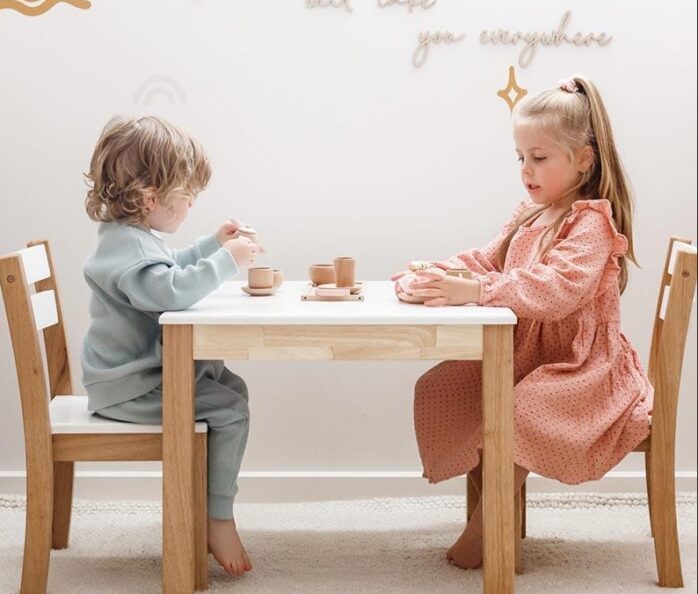
Mini Furniture
Having furniture in your child’s playroom is a must. It can be a little table and chairs set that they will use for tea parties, storytelling time, or even handicraft. You can even choose various designs and types of miniature furniture sets that will fit the design of your child’s playroom and for that you can visit https://myhappyhelpers.com.au/collections/kids-tables-chairs.
Rug Area
Add a bright rug to a child’s playroom to visually establish isolation from the central playing space. In an open floor layout, it will carve out the playing area. The rug will provide a visual border between work and play with some stylish flooring. Putting a rug is also a terrific approach to clearly show children where it is okay to put their toys for play.
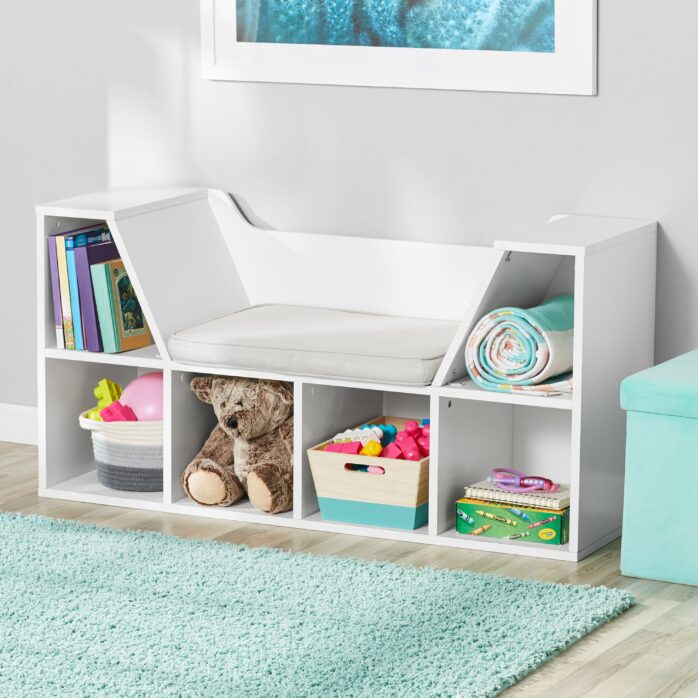
Designate a Storage Area
Sometimes when your children play in the living room, it becomes a bit messy. You have toys all over the couch and on the floor. Sounds familiar? If it is your house’s current state, consider designating a space for a children’s playroom, complete with enough storage room for all of their toys.
Consider putting a couple of baskets in one corner of the room. These are kid-friendly and straightforward toy storage ideas. Because they can pack their toys neat and easy, it’s an excellent approach to reduce clutter during cleaning. And as the kids stop playing with some toys, you may reuse the storage boxes for a different purpose.
Keep Everything Child-Friendly
It means to put away anything that can be a potential choke hazard. Children are curious and tend to chew on anything they hold. Do the paper towel roll test. If the toy easily fits through, it is not suitable for children under three years old.
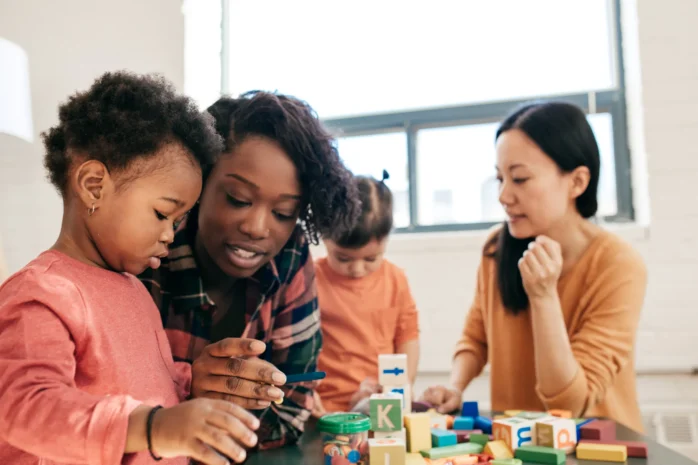
Inspect Your Yard
If your play space is in your yard, make sure to clear away dangerous objects. Keep your items such as sharp gardening tools and chemicals on your top shelves where children will not have access to them.
Also, look for natural risks such as small potholes, tree branches, and ant colonies in your yard. Check for insect hives or nests in outdoor playsets and regularly examine sandboxes for insects and animal wastes.
Install Fence or Baby Gates
You may give your kid greater freedom if you use baby gates to block off dangerous areas. Put a baby gate to prevent them from walking near the staircases or slippery bathrooms. You can also cover pointed edges of furniture with foam protectors and tether bookshelves to your walls.
If you want to build up a nice play area for your child in your yard, fences with self-latching gates can assist keep your children safe. You allow your child to roam and play to foster their sense of independence and stimulate natural curiosity. All while keeping them safe.
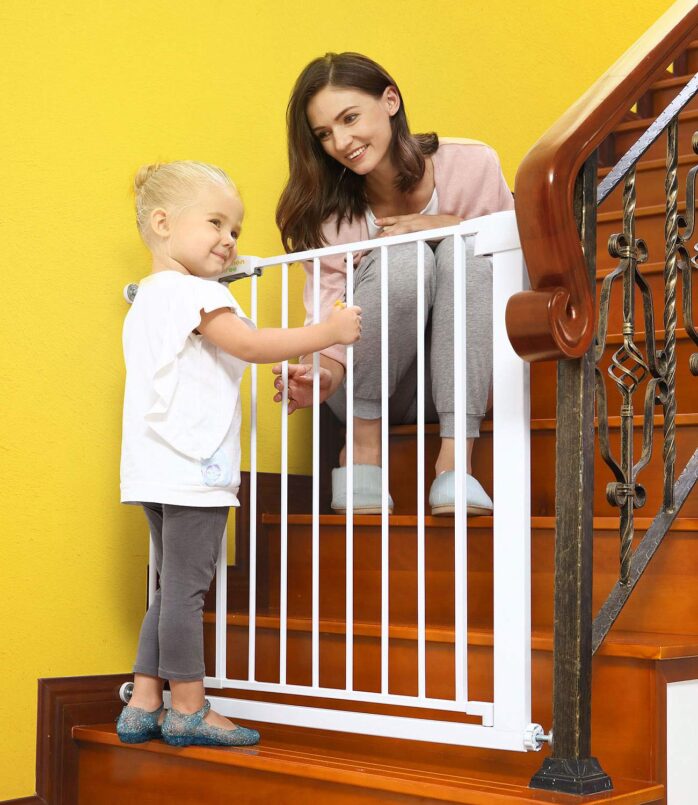
Have a Playground Rules
Allow your children to assist you in establishing guidelines for safe playtime, especially if their designated play area is outdoors in the backyard. Please make a list of the rules and publish it somewhere where everyone in the play area can see it. When your children’s friends come over, make sure they understand your family’s outside rules.
The basic rules may include: When playing on slides, climbing walls, or swings, do not chase, push, or roughhouse one another. Put a reminder for children to stay away from restricted areas like the garage or pool and in areas of the house where they are unsupervised.
Regularly Check The Playsets Condition
Playsets with several playing locations, like slides and swings, promote physical activity and role-playing. However, they must be kept well and examined for indications of wear regularly.
Rotten wood, loose bolts, defective floorboards, and unsecured stairs and railings are all swing set risks to look out for. You can make your checklist swiftly detect potentially dangerous objects and then repair them before allowing your child near the playsets again.
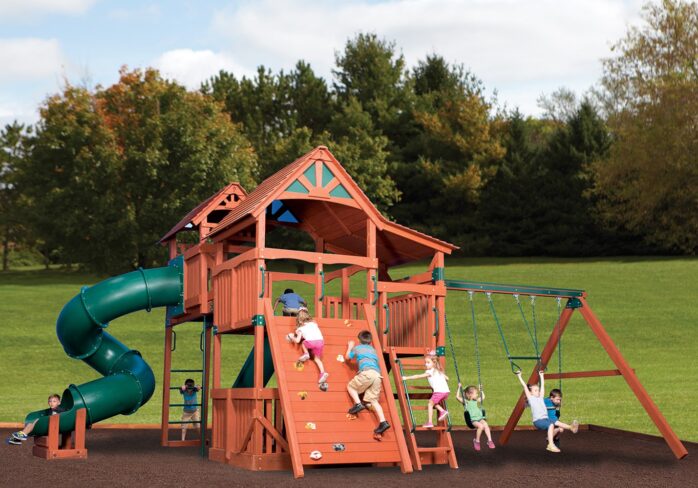
Always Monitor Your Child
This one is an important reminder. Always watch over your kids during their play. Injuries can happen quickly, and you may believe you did your best to have protected your kid’s play area. You may still miss anything that might cause injury.
If you cannot oversee your kid constantly, have a baby monitor in the room so you can still check on them through your phone or other receiving devices. If you need to attach it to them and it comes with a cord, make sure it is correctly secured not to pose a suffocation danger.
Takeaway
Despite all precautions, accidents do occur. Children are curious little things that will relentlessly try things as they grow. Hence, it is crucial to set up a safe play area to lessen the risks.
However, do remember that creating a safe play space for your child does not mean it’s entirely alright to leave them in their devices. Protected play zones will only allow you to supervise while still folding clothes or doing your paperwork across the room.
The post Children’s Nook: Setting Up A Safe Play Area For Your Kids appeared first on FotoLog.
from FotoLog https://ift.tt/33k4wUv
via IFTTT


0 Comments